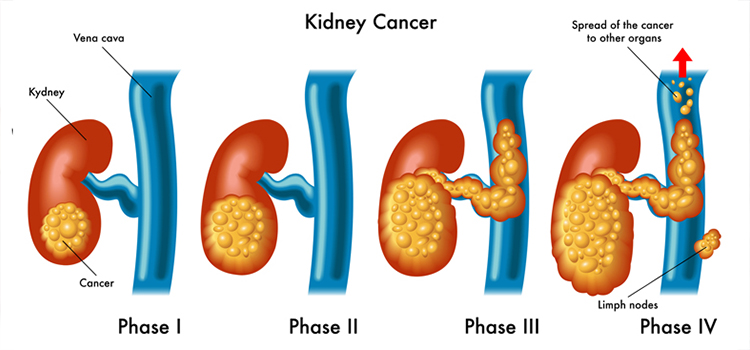

Survival Rates of Kidney Cancer
Almost every patient who is diagnosed with the cancer wants to know about his survival rate. So, the patients generally ask the doctor about their survival rate. They can’t tell you exactly how long you will live, but they may help give you a better understanding of how likely it is that your treatment will be successful.
A relative survival rate compares people with the same type and stage of kidney cancer to people in the overall population. For example, if the 5-year relative survival rate for a specific stage of kidney cancer is 80%, it means that people who have that cancer are, on average, about 80% as likely as people who don’t have that cancer to live for at least 5 years after being diagnosed.
Localized: There is no sign that the cancer has spread outside of the kidney. As long as the tumour is within the kidney the five years survival rate of the patients rise to somewhere between 80-90%. And in the same case if the size of the tumour is around 4-7 cm it will rise up to 90-100%. But if the size is more than 10 cm the survival rate decreases to 70%. so as long as the tumour is inside the kidney the survival rate may lie between 70-90%.
Regional: The cancer has spread outside the kidney to nearby structures or lymph nodes. Now, if the tumour is spread to other parts of body the 5-year survival is only 10% i.e., only 10 out of 100 patients will survive for 5 years. If the tumour has spread to the lymph node, then the survival rate rises to 20%.
- Distant: Includes cancers that have spread to distant parts of the body such as the lungs, brain, or bones. And the survival rate is somewhere around 20-30%.
Now a days with the advancement of technology if the thrombosis is below the level of diaphragm, then 50% of patient will survive more or up to 5 years.
So, kidney tumours that are less than 4 cm they can be removed and the survival rate will be approximately 100%. With size decreases the survival rate and if the tumour has spread outside the kidney the survival rate decreases.
- People now being diagnosed with kidney cancer may have a better outlook than these numbers show.
- These numbers apply only to the stage of the cancer when it is first diagnosed. They do not apply later on if the cancer grows, spreads, or comes back after treatment.
- These numbers don’t take everything into account.
- Keep in mind that survival rates are estimates and are often based on previous outcomes of large numbers of people who had a specific cancer, but they can’t predict what will happen in any particular person’s case. These statistics can be confusing and may lead you to have more questions. Your doctor is familiar with your situation, so ask how these numbers may apply to you.
Dr Soumyan Dey is a Best Uro Oncologist who is best kidney cancer surgeon in Mumbai follows a evidence based approach to identify the best course of Kidney Cancer treatment.


